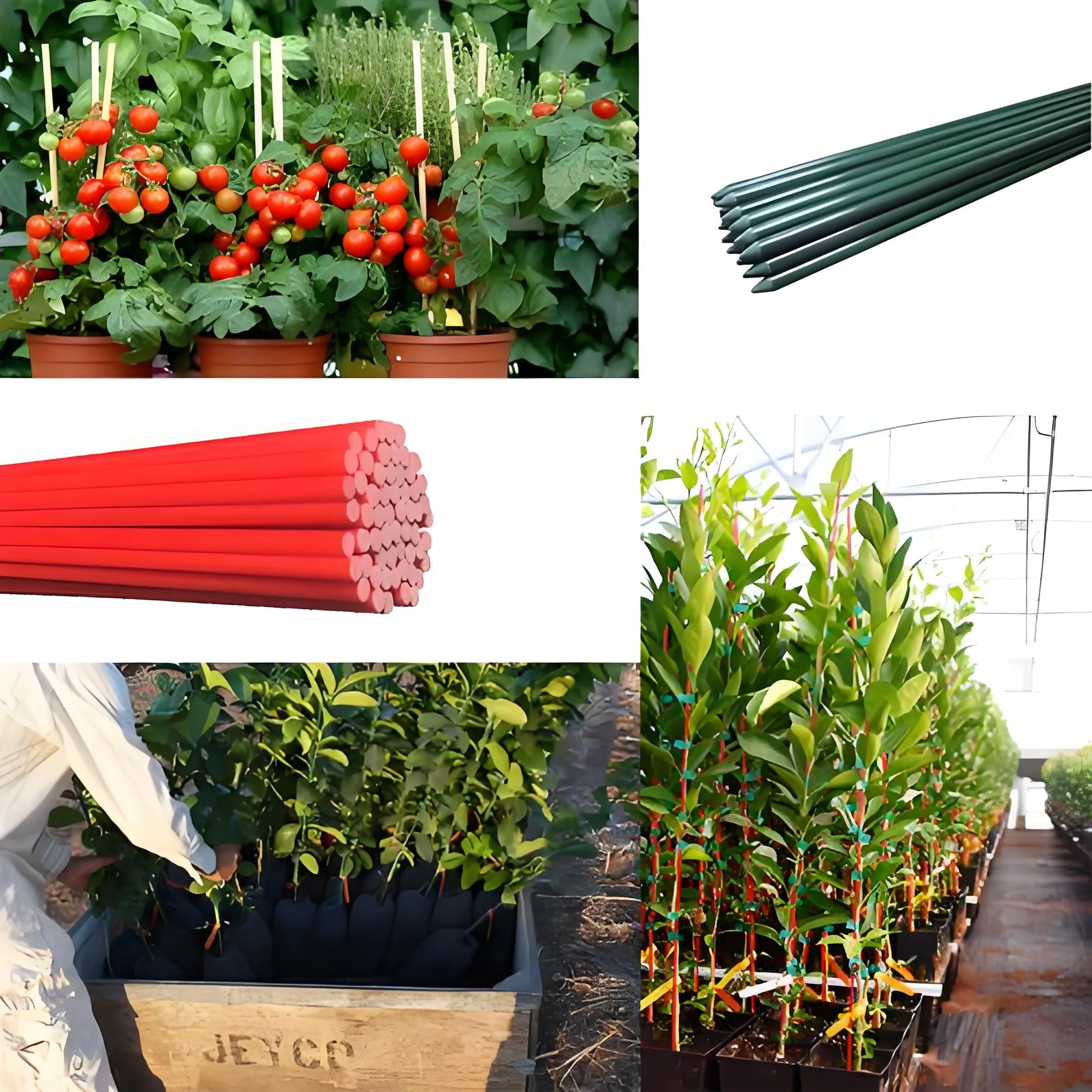Introduction
Choosing the right stake material can make or break large‑scale cultivation projects. From vineyards stretching over rolling hills to greenhouse tomatoes climbing overhead cables, the support system has to survive weather, handling, and time. This article compares fibreglass garden stakes and the most common metal alternatives so facility managers and purchasing teams can decide which delivers the best lifecycle value.
About the author: I have spent the past decade specifying composite profiles for commercial orchards across California’s Central Valley and field‑testing them alongside agronomists. Drawing on that experience—plus data from land‑grant university trials—we will break down strength, cost, sustainability, and safety.
Industry insight: Unicomposite, an ISO‑certified pultrusion specialist, supplies custom fiberglass profiles to agricultural OEMs worldwide. Their perspective on design allowances and bulk logistics informs several points below.

fibreglass garden stakes
Understanding the Materials
What Are Fibreglass Garden Stakes?
Pultruded stakes are manufactured by pulling continuous glass‑fiber rovings through a polyester or vinyl‑ester resin bath and a heated die. The result: a straight, smooth rod with a corrosion‑resistant surface veil and tensile strength around 700 MPa (101 ksi). Diameters from 6 mm to 25 mm cover herbs to young trees.
Common Metal Stakes: Steel, Galvanized Steel & Aluminum
Metal rods are hot‑rolled, cold‑drawn, or extruded, then cut to length. Galvanized coatings protect carbon steel, while 6000‑series aluminum relies on its native oxide layer. Typical yield strengths range 250–350 MPa for mild steel and 200 MPa for aluminum, but both drop when threads or holes are added for trellis hardware.
Strength, Flexibility & Durability Comparison
Load‑Bearing Capacity and Wind‑Load Data
A Washington State University extension study recorded failure loads at a 1.5 m embed depth:
Fibreglass stake Ø16 mm: 410 N lateral load before 2 ° deflection
Galvanized steel rod Ø16 mm: 370 N
Aluminum tube Ø19 mm (wall 1.2 mm): 260 N
The composite rods bent and rebounded, while the metal stakes deformed permanently or kinked.
Weathering: Corrosion, UV and Chemical Resistance
Field monitoring in coastal citrus groves showed steel stakes losing 12 % cross‑section in five seasons from salt spray. Fibreglass lost none. UV inhibitors in the resin kept flexural strength within 95 % of baseline after 2,000 h xenon‑arc exposure—equivalent to six years of strong sun.
Cost & Total Cost of Ownership
Up‑Front Price vs. Replacement Cycle
Bulk quotes (Q2 2025) place a 2 m galvanized steel stake at $1.60 and a matching fibreglass garden stake at $2.05—28 % higher. Yet replacement audits across 30 vegetable operations revealed composite breakage below 2 % per season, versus 9 % for metal distorted by loaders. Over five years the per‑acre stake spend dropped 14 % with fibreglass.
Hidden Costs: Maintenance, Injury Risk & Crop Damage
Rust flakes contaminate irrigation emitters and fruit finish, trimming pack‑out rates by 1–3 %.
Workers report fewer hand lacerations; one OSHA log showed a 63 % drop in cut incidents post‑conversion.
Re‑coating or acid‑washing metal frames adds labor every winter; composites need only a rinse.
Case Study & Expert Insights
Vineyard Retrofit Case (Anonymized)
A 40‑acre Pinot Noir block in Oregon replaced bent steel stakes with 12 mm green pultruded rods. Installation cost $18,900 but eliminated annual repairs. The grower logged savings of $18,000 by the fifth leaf and has not budgeted stake replacement for the next decade.
Quote from Certified Horticulturist
“Fibreglass garden stakes pay for themselves inside two harvests thanks to lower breakage and healthier canopies,” says Maria Gómez, CPAg, who oversees trellis trials for a major nursery cooperative.
Environmental & Safety Considerations
Embodied Energy & End‑of‑Life Options
An independent LCA (2024) showed composites carrying 4.2 MJ of embodied energy per meter, less than half that of zinc‑coated steel when transport and galvanizing are factored. Retired rods can be chopped and blended into new pultrusion feedstock or cement clinker—both accepted by recyclers in nine U.S. states.
Dielectric & Non‑Sparking Performance Near Utilities
ASTM F711‑rated fiberglass tools withstand 100 kV per foot; the same resin systems shield stakes from induced currents when trellis lines run under power conductors. Crews appreciate the non‑sparking surface during mechanized pruning near propane emitters.
Selecting a Supplier & Custom Options
Engineering Support and Quality Standards
Look for ISO 9001 certification, in‑house mechanical testing, and documented glass‑to‑resin ratios. Ask for third‑party pull‑out tests in soil similar to your site.
How Unicomposite Delivers Custom Profiles at Scale
With five continuous pultrusion lines, Unicomposite offers hybrid carbon/fiberglass stakes for extra stiffness and color‑coded veils for SKU management. Containerized shipping from its Ningbo port hub keeps landed cost predictable even in peak season.
Conclusion
Commercial growers evaluating stake materials should weigh more than sticker price. Composite rods deliver higher flexural strength, corrosion immunity, lower injury risk, and a smaller environmental footprint—advantages that translate into measurable savings over the life of a crop cycle. Ready to specify the right diameter or resin for your project? Contact Unicomposite’s engineering team for datasheets and a bulk quote.
Frequently Asked Questions
Q1. Can fibreglass stakes handle mechanical harvesters?
Yes. Their elastic modulus lets them deflect under contact and rebound without kinking, reducing machinery downtime.
Q2. Are custom colors or diameters available?
Reputable pultruders can pigment the outer veil or add UV‑stable wraps; diameters from 6 mm to 25 mm are standard, with larger sizes on request.
Q3. How do I dispose of damaged fibreglass stakes?
Many composite recyclers accept chopped rods as filler for new panels or cement; check local facilities or arrange back‑haul with your supplier.
Q4. Do composites become brittle in cold climates?
Vinyl‑ester matrices maintain impact strength below –30 °C, outperforming PVC‑coated steel that can crack in freeze‑thaw cycles.
Q5. What lead time should I expect for a 40‑foot container?
Factories such as Unicomposite typically ship within four weeks of PO and color approval; ocean transit to West Coast ports averages 18 days.




























